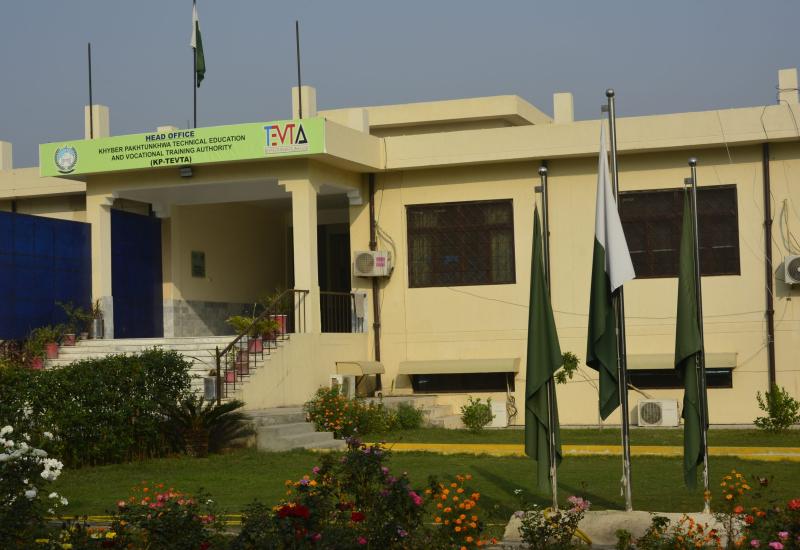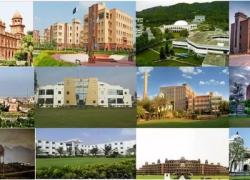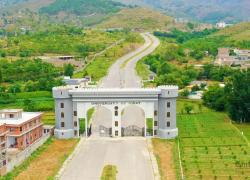The top 10 reasons why HR issues in the Universities in Pakistan are getting complex
In the previous blog post, the 10 most problematic HR areas in the public sector universities in Pakistan have been listed. This article further elaborates some of these grey areas to provide a deeper insight to the academic leaders, policymakers and practitioners in order to reform and align it more closely with the strategic objectives of the institutions of higher education in line with global HR best practices.
1. Lack of HR vision, mission and strategy
- There are very few universities to have the HR vision, mission and strategies delineated, partly for the realization of its significance and partly for lack of deep understanding of these important areas.
- Those universities having the HR vision and mission defined are having troubles while aligning the same with the overall mission and vision of the universities.
2. Lack of basic knowledge and understanding of the HR system and practices
- The idea of HR best practices is newfangled to the academic leadership and top management in academia. They are not mindful of the fact that HR is a specialized discipline that needs qualified staff, leadership skills, extensive knowledge and deep understanding of the domain. The people at the helm of universities’ affairs has not given a close and thoughtful attention to the new trends and challenges confronted by the universities in the contemporary academic world.
- Those who mainly deal with the HR affairs in the universities are not HR qualified and even those are not properly trained for the job. This lack of profound understanding of the significance of HR in the institutions of higher education has serious repercussions
3. Defective HR structure and hierarchy
- Whatever HR structure and composition is practically working in the universities, it is rigid, vertically integrated and hierarchical.
- A full-fledged separate HR Department is not effectively functioning in the universities. Similarly, there is no statutory body such HR council or HR board overseeing HR affairs in the universities. The HR functions have been made unnecessarily confounded which is mainly looked after by the Establishment Section/ Department.
- Strong resistance to integrate HR best practices in the universities and the high-power distance culture prevailing in the country is instrumental in framing bureaucratic HR structure, policies and practices.
4. Challenges in hiring professional staff and faculty
- The processes involving the hiring of professionals, technical staff and faculty in the universities is not uniform. It is obsolete, bureaucratic and labour-intensive. A great deal of confidentiality is involved in it. The whole process from advertisement to final selection is hunted by inadvertent delays.
- This one of the key HR functional areas that breed legal complications as meticulous attention is not being paid to minute details, at each stage of the staffing function.
- The hiring decisions, generally, are not made in the light of the neutral assessment of the individual candidates to perform a job practically. The work-related attributes particularly skill set and the ability to contribute to the team performance are not taken into account during the process of evaluating the candidate’s suitability for the given position.
5. Role ambiguity and lack of clear responsibilities
- Analyzing and defining jobs of the various cadres of employees is another grossly neglected area in the universities resulting in roles ambiguity and multiple people performing overlapping tasks.
- In the absence of precise JDs, performance evaluation has always been cumbersome and fixing responsibilities in case of irregularities remained clumsy. In most of the cases, jobs are defined at a belated stage even after the hiring process and the incumbent assuming the role.
- Defining jobs of the teaching faculty is even daunting as hardly any of the university has given it serious consideration. Besides, the workload of teaching faculty, as well as, the administrative staff is not precisely defined in many cases resulting in a situation where some of the employees are overburdened while others have literally nothing to do.
6. Scarcity of capacity building opportunities
- There are very few universities having a well-defined policy for training and development of the employees. Pre-serving training which is considered as a mandatory requirement for new entrants in the public sector has not gained currency in academia.
- In the universities, for promotion from one position to another, there is no requirement of the mandatory training course as in practice in the public sector organizations. If someone grasps any opportunity of attending a training session, it used to be highly irrelevant and not to be helpful in running the official business of the universities.
- Substantial allocation is not being made in the universities’ budget for the training and development component. Wherever allocation is being made for the purpose, spending on this account always remains at the lowest. This asks for re-appropriation of the allocated budget for other purposes.
7. Lack of effective performance appraisal system
- There is no proper system in place for evaluation of the employees’ performance in the universities. In academia, like any other public sector organization, it is based on traditional confidential reporting of performance at the end of each calendar year. In the existing system, a peculiar proforma is being used for performance appraisal of almost all cadres of employees (i.e. faculty, administrative and technical staff).
- Obsoleteness of the appraisal system, untrained evaluators and non-involvement of the concerned staff are the potential bottlenecks. Majority of the heads of the departments are not cognizant of the philosophy of modern appraisal system. Targets and goals are neither mutually set nor formally shared with the employees. Performance review meetings are not regularly held with the staff.
- Being a poorly executed job, it has become just a formality rather than any serious business in the universities these days.
8. Defective compensation and reward system
- In most of the universities (with a few exceptions and some minor variations) the government pay packages are adopted mutatis mutandis. Hence, all the employees, irrespective of their performance, get the monthly pay, annual increments, budgetary increases and other financial as well as non-financial benefits regularly as no mechanism has been evolved for rewarding the star performers or disciplining the worst performers.
- Variance in pay for the same level of jobs is invariably effective and higher pay on the basis of just one single parameter, (i.e. seniority) is widely prevailing.
- The increase in pay and privileges due to across the board up-gradation of the faculty members by HEC acerbated the pay disparity among various positions of the same level.
9. Lack of opportunities for promotion and prospects for career development
- Prospects for promotion and career development of employees are not sufficiently exciting. Career ladder hardly exists for faculty. In the case of administrative staff positions, wherever any career prospects are available, these are daunted by numerous bottlenecks.
- In the prevailing situation, wherever, employees are promoted it is based on seniority cum fitness. Less efficient are get accelerated promotions, at times. There is no concept of succession and replacement plan in the universities.
- The career development practices in the selected universities are characterized mainly by congestions in career channels, rapid and unplanned up-gradation and subsequent promotions of some of the cadres and stagnancy of the rest.
10. Uncongenial working environment and trust deficit
- There is a grievous trust deficit and lack of effective coordination among faculty and administrative staff. Relation among teaching faculty and administrative staff remain tense. In the more established universities, it is at its worst as the working environment is highly uncongenial.
- The grievances of both the cadres are left unattended by those who matter the most. The resilience to change this mindset is palpable.
- At times, if the some of the official business gets delayed, probably due to procedural delays, red tape or any other unforeseen reason, the blame game starts and the institutions of higher education ultimately, suffer. This has seriously affected the organizational commitment of the faculty members as well as staff in the universities.
Conclusion
For the realization of the universities’ vision, mission and strategic objectives, through its vibrant policies and innovative academic programs properly skilled and highly motivated human resource is inevitable. Developing HR capacity and building an effective HR department is a futuristic disposition towards universities governance. In fact, it is about a complete transformation of HR function, establishing earnest and welcoming relationship with key stakeholders and appreciating the foremost role of human resources in the academic settings.


















